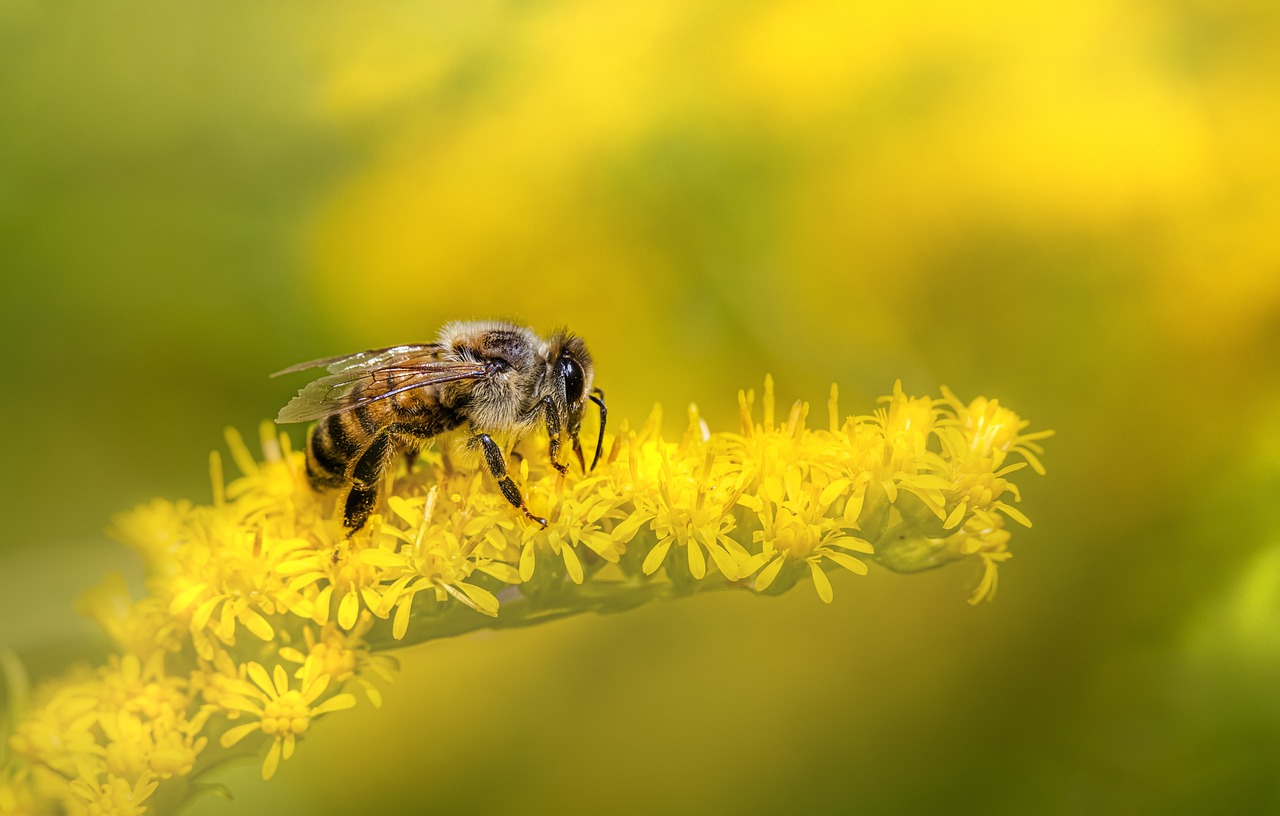Western Honey Bee (Apis mellifera)
The Western honey bee is one of the world’s most important and well-known insect species. Renowned for its role in pollination and honey production, this species is essential to ecosystems and agriculture across the globe.
🐝 Description
- Scientific name: Apis mellifera
- Common names: Western honey bee, European honey bee
- Size: 10–15 mm long
- Color: Golden-yellow to brown with black bands and fine body hairs
- Body structure: Divided into head, thorax, and abdomen, with two pairs of wings and large compound eyes
🌍 Habitat & Range
Originally native to Europe, Africa, and Western Asia, Apis mellifera is now found on every continent except Antarctica due to human introduction.
It thrives in meadows, orchards, gardens, forests, and agricultural fields where flowering plants are abundant.
🍯 Behavior & Diet
- Diet: Nectar and pollen from flowering plants
- Role: Major pollinator of crops and wild plants
- Honey production: Worker bees convert nectar into honey and store it in wax combs for winter food
- Communication: Bees perform the waggle dance to tell others where to find flowers
👑 Colony Structure
A highly social insect species living in colonies of 20,000–80,000 bees, with three main castes:
- Queen: The sole fertile female; lays up to 2,000 eggs per day
- Workers: Sterile females; perform all duties from foraging to nursing
- Drones: Males; their only function is to mate with queens
🌸 Ecological Importance
Western honey bees are among the most vital pollinators on Earth, supporting global food production and biodiversity. They pollinate fruits, vegetables, nuts, and many wild plants.
⚠️ Threats
- Habitat loss
- Pesticide exposure
- Varroa destructor mites
- Colony collapse disorder (CCD)
- Climate change impacts
🧠 Interesting Facts
- Honey bees must visit 2 million flowers to make 1 pound of honey.
- They can recognize human faces and communicate complex information through dance.
- Honey never spoils — ancient honey has been found still edible after thousands of years.
More:
The Western Honey Bee, scientifically known as Apis mellifera, is one of the most well-known and economically important bee species in the world. Here are some key features and characteristics of the Western Honey Bee:
- Appearance: Western Honey Bees have a distinct appearance with a fuzzy, striped abdomen, and relatively large compound eyes. They typically have a yellow-orange to brown coloration with black bands across their abdomen. Worker bees, which are female, are usually smaller in size compared to the queen bee and the drones (male bees).
- Habitat and Distribution: Originally native to Europe, Africa, and the Middle East, Western Honey Bees have been introduced and managed in various regions worldwide for their pollination services and honey production. They are highly adaptable and can thrive in a wide range of habitats, including forests, grasslands, and agricultural landscapes.
- Social Structure: Western Honey Bees are social insects that live in highly organized colonies. Each colony consists of a single queen bee, thousands of worker bees, and a smaller number of male drones. The queen’s primary role is to lay eggs, while worker bees perform tasks such as foraging for food, caring for the young, and building and maintaining the hive. Drones are responsible for mating with the queen.
- Honey Production: Western Honey Bees are renowned for their ability to produce honey, a valuable food source for both bees and humans. Worker bees collect nectar from flowers using their specialized proboscis (tongue) and store it in their honey stomachs. Back at the hive, they deposit the nectar into cells within the honeycomb, where it is converted into honey through a process of enzymatic digestion and evaporation.
- Pollination: In addition to honey production, Western Honey Bees play a crucial role in pollinating flowering plants, including many crops that are important for human food production. As they forage for nectar and pollen, bees transfer pollen grains from one flower to another, facilitating fertilization and fruit and seed production.
- Communication: Honey Bees communicate with each other through a complex system of pheromones, vibrations, and dances. One famous example is the “waggle dance,” performed by worker bees to communicate the location of food sources to their nestmates.
- Conservation: Western Honey Bees, like many other bee species, face threats from habitat loss, pesticide exposure, diseases, parasites, and climate change. Conservation efforts aimed at preserving bee-friendly habitats, reducing pesticide use, and promoting beekeeping practices that prioritize bee health are essential for ensuring the survival of Western Honey Bee populations and the ecosystem services they provide.
Views: 2788
Subscribe to the newsletter:
